
This chapter covers:Why is Research Important?Approaches to ResearchAnalyzing FindingsEthicsFor more information, visit OpenStax College.
- Subject:
- Psychology
- Social Science
- Material Type:
- Module
- Date Added:
- 07/10/2017

This chapter covers:Why is Research Important?Approaches to ResearchAnalyzing FindingsEthicsFor more information, visit OpenStax College.
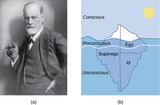
By the end of this section, you will be able to:Explain how scientific research addresses questions about behaviorDiscuss how scientific research guides public policyAppreciate how scientific research can be important in making personal decisions

Students are given the opportunity to learn a process-based approach to river research, by developing research questions about river form and function in Maine. Students filmed themselves while collecting and analyzing their data. The final product is a 6-minute video, created in Final Cut Pro X, that contained a description of their project,their hypotheses, analysis/results, and conclusions.
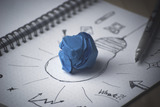
Unit 3 – Science and Sociological ResearchChapter 2 pages 30 – 441. The Scientific Method2. Different types of research methodology: Surveys, Field Research, Experiments, Secondary Data Analysis3. Ethics and Sociological Research
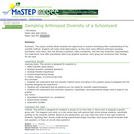
Short Description: This is an inquiry investigation, geared toward student use of outdoor schoolyard sites. Its focus is to have students applying what they've learned about the scientific method and experimental design, gathering quantitative evidence to support hypotheses.
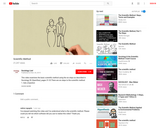
This video examines the basic scientific method using the six steps as described in Sociology 2E (OpenStax), pages 31-33.There are six steps to the scientific method:
1. Ask a Question
2. Research existing sources
3. Formulate a Hypothesis
4. Design and Conduct a Study
5. Draw Conclusions
6. Report Results
Understanding the scientific method helps us distinguish sociology from common sense and gives us an insightful picture into how we experience things in groups.

Activity to work with scientific method.

How the scientific method is used to ask questions and test explanations.
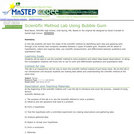
This activity is a lab investigation where students gather data which compares 2 types of bubble gum, while learning to use the scientific method to collect qualitative and quantitative data using SI units.
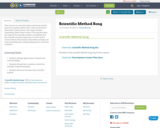
This resource is a song that helps students get excited about the scientific method. Set to the tune of Gotye's "Somebody I Used to Know," this song is entitled "Something I Didn't Used to Know." The song describes the stages of the scientific method, and explains why the scientific method is important. It can be used to excite students about inquiry and problem-solving in all areas (including math, reading language arts, and social studies)!!!

This is a lecture which breaks down the scientific method and how it can relate to psychology.
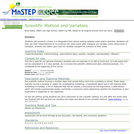
This activity is a lab investigation where students collect and analyze data on towers built with various components and compare the two.

This activity is to dispel the misconception that there is one single structured scientific method used by all scientists, and tackle some ethical issues raised in life. This is accomplished using the popular movie "Awakenings" and student observations and reflections.
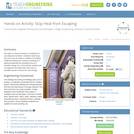
In this activity, students act as engineers to determine which type of insulation would conserve the most energy.

This article details an investigation designed and carried out by fourth-grade students about bird behavior in cold weather.

This course will introduce you to a general overview of the biological world. Important concepts will be reinforced and expanded upon through completion of weekly laboratory activities and homework assignments. Upon successful conclusion of the course, students will be able to do the following: Describe the nature of science, including its methods and its limitations; Describe the basic methodology of doing science and the scientific method; Use the scientific method to study everyday situations as well as in laboratory/field investigations; Identify, describe, and explain at a rudimentary level and present examples of, the characteristics common to all living things; Explain that living organisms are composed of molecules which interact in a variety of different chemical reactions necessary to sustain life; Explain that living organisms are comprised of one or more cells and are classified as prokaryotic or eukaryotic based on cellular characteristics; Describe the hereditary information possessed by living and explain how that information determines the cellular characteristics and functions (including basic Mendelian genetics); Explain and describe, with examples, the diversity of life, at different levels (basic molecular to ecological) and how it is hierarchically organized into systems; Explain how evolution by natural selection occurs, and describe the evidence that supports the theory of evolution; and more.

Students explore how pendulums work and why they are useful in everyday applications. In a hands-on activity, they experiment with string length, pendulum weight and angle of release. In an associated literacy activity, students explore the mechanical concept of rhythm, based on the principle of oscillation, in a broader biological and cultural context in dance and sports, poetry and other literary forms, and communication in general.
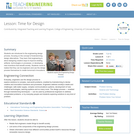
Students are introduced to the engineering design process, focusing on the concept of brainstorming design alternatives. They learn that engineering is about designing creative ways to improve existing artifacts, technologies or processes, or developing new inventions that benefit society. Students come to realize that they can be engineers and use the design process themselves to create tomorrow's innovations.
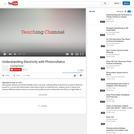
Sixth grade students at Eckstein Middle School use their understanding of electricity to explore electrical current in a circuit with photovoltaic cells.Using a lamp to model the sun, students work in teams and connect different power sources in series and parallel circuits to determine the effects on light bulbs or small motors. Discussion between students about the differences in voltage and the flow of electrons from negative to positive terminals provide opportunities for students to explain their learning and for the teacher to assess their understanding.Learning is extended beyond the experiment as students use photovoltaic cells to power equipment and offset electrical load in the classroom.
